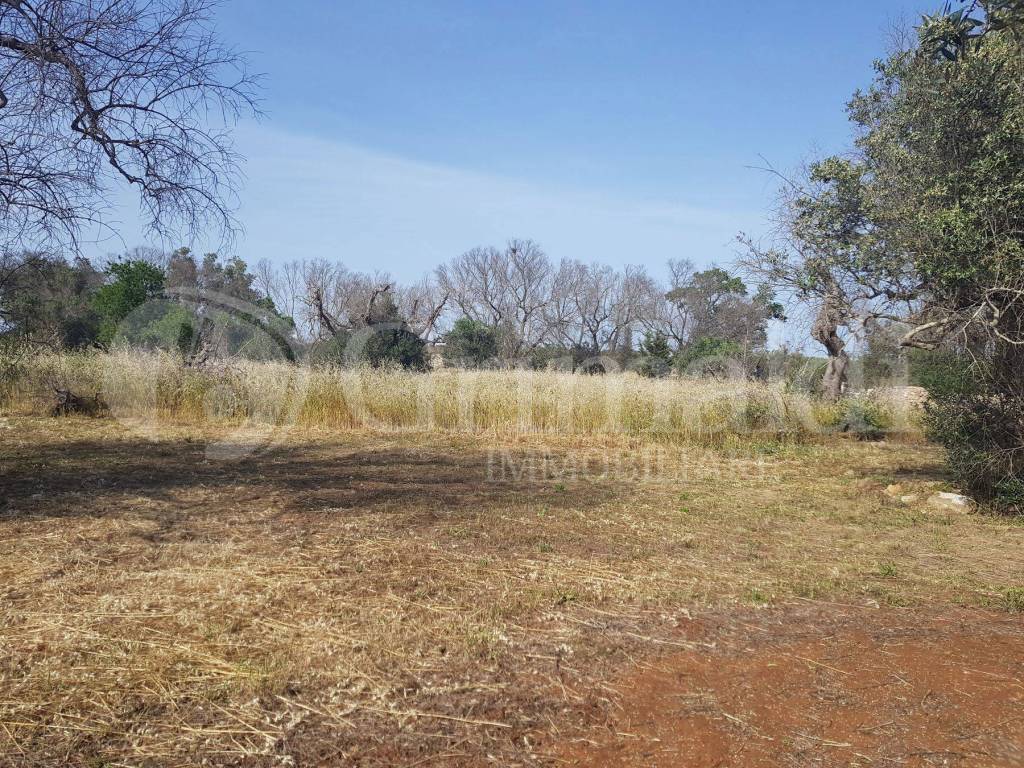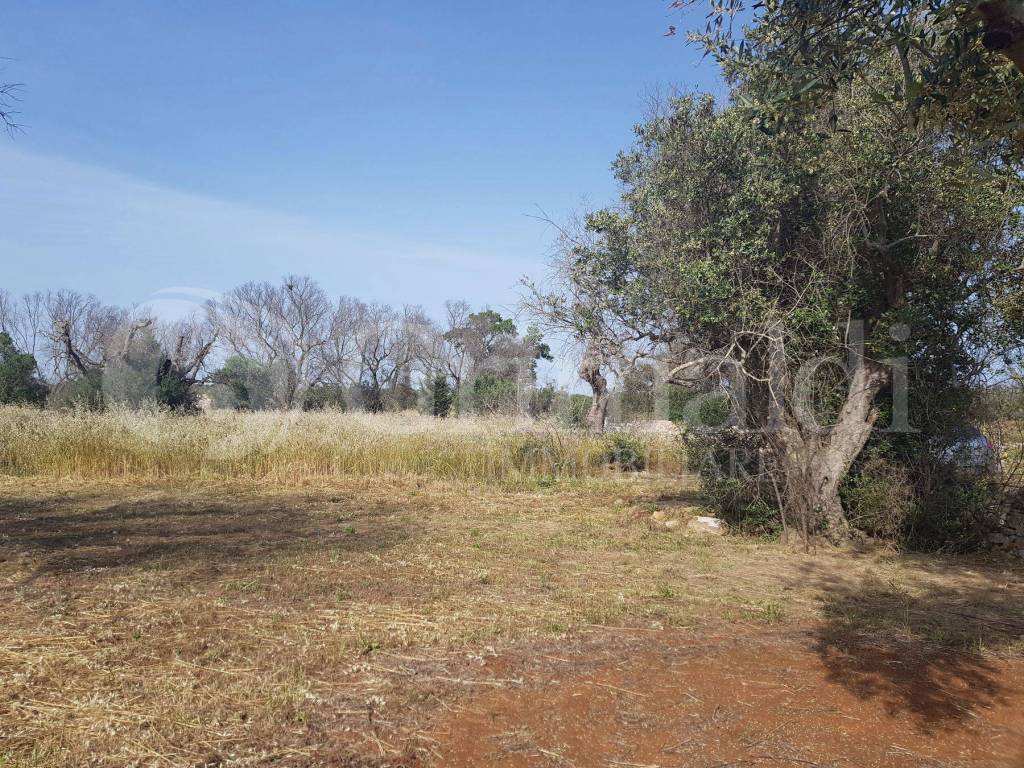
Agricultural land for Sale
Sannicolacontrada camastra, 0- € 2,000
- 1,660m²
Listing updated on 05/08/2024
Description
This description has been translated automatically by Google Translate and may not be accurate
In the fiefdom of Sannicola, and more precisely in "Contrada Camastra", we offer for sale a plot of agricultural land where there is a characteristic "trullo". The land covers an area of 1,660 m2.
For further information, contact the agency contact details.
Curiosities…
Sannicola is still today a town with a mainly agricultural economy, however thanks to the growth of Salento tourism in recent years the town has been better known for the presence of new restaurants and entertainment venues.
Until the very early 1900s Sannicola was a hamlet of Gallipoli, therefore until that date Sannicola saw its history inevitably linked to that of Gallipoli. Unfortunately, the two places have in common the history and the scarcity of documentation relating to the period before 1484, the year in which the Ionian town was invaded and destroyed by the Venetians. In the Byzantine era of the Basilian monks the whole area of Sannicola was called Rodogallo , in Greek it meant place of beautiful roses, later there was the distinction into Rodogallo magno and Rodogallo parvo. These toponyms of Greek origin together with those of Renocallo or Rinocallo referred to medieval villages that were completely destroyed. Regarding the presence of the Basilian monks, it is worth mentioning the abbeys of San Mauro, San Salvatore, in the vicinity of Sannicola and Gallipoli. San Tirso, Santo Stefano de Fonte and Santa Maria de Ligiro, as well as various small churches. In the area there are still districts that retain the name of Greek origin: Pràndico, Camastra and Meforìe.
The church of San Nicola is certainly also of Basilian origin, but it was destroyed during the first half of the 1500s.
When the Basilian monks began to decline, the same fate befell Gallipoli and the Sannicola countryside. At the beginning of the fourteenth century the surrounding populations systematically raided the Ionian town. Towards the end of the fifteenth century the situation worsened due to the Turks, Venetians and especially the French. The latter found valid allies in the territory itself in the figures of the feudal lords of nearby villages and hamlets: such as Galatone, Galatina, Parabita, Matino, etc.
After this terrible historical period passed, Gallipoli was somehow reborn, at the beginning of 1600 humble farmers built many houses scattered, authorized by the large landowners in exchange for their services: custody and exploitation of the land. In 1640 it was Domenico Musurù who had a small dedicated temple built on the site of San Nicola, on the ruins of the church of the same name and in an uninhabited area to the Saint of Mira.
The locality of Sannicola officially dates back to 1715, when the landowner Gabriele Carlo Antonio Coppola made some lands available free of charge to six farmers; with the declared aim of building homes there. Other owners did the same in the vicinity, so that the Rodogallo countryside, albeit measuredly, began to populate. This area was particularly healthy and had a mild climate. For this reason, the richest families of Gallipoli had casinos built, that is, sumptuous villas with private gardens and chapels, right in the area of the small church of San Nicola; thus the first forms of holiday resorts originated.
During 1700 Sannicola became the most populous district in the vicinity of Gallipoli, for this reason in 1715 and 1797 the chapel of San Nicola was enlarged; and in 1790 a parish was built.
Villa San Nicola, so called for almost the entire 19th century, and Villa Picciotti in 1830 claimed the independence of their municipality from Gallipoli in front of King Ferdinand. However, while the Picciottari obtained what they wanted almost immediately and in 1854 they founded the Municipality of Alezio; the Sannicolesi had to resign themselves with a simple administrative decentralization. In 1899, and in 1905 the Sannicolesi tried again and on this last occasion they achieved the long-awaited success. With a royal decree of 1908 the Sannicolesi, no longer San Nicolesi due to an error, obtained administrative separation from Gallipoli. The royal decree which instead defined the territorial district of Sannicola represented a victory for Gallipoli which managed to ensure that the stretch of coast of the marinas of Rivabella, Padula Bianca and Lido Conchiglie remained Gallipoli. Today we understand even more how detrimental this last fact was for Sannicola.--38bb3fec6567a71af6e2120bc77115cf!
For further information, contact the agency contact details.
Curiosities…
Sannicola is still today a town with a mainly agricultural economy, however thanks to the growth of Salento tourism in recent years the town has been better known for the presence of new restaurants and entertainment venues.
Until the very early 1900s Sannicola was a hamlet of Gallipoli, therefore until that date Sannicola saw its history inevitably linked to that of Gallipoli. Unfortunately, the two places have in common the history and the scarcity of documentation relating to the period before 1484, the year in which the Ionian town was invaded and destroyed by the Venetians. In the Byzantine era of the Basilian monks the whole area of Sannicola was called Rodogallo , in Greek it meant place of beautiful roses, later there was the distinction into Rodogallo magno and Rodogallo parvo. These toponyms of Greek origin together with those of Renocallo or Rinocallo referred to medieval villages that were completely destroyed. Regarding the presence of the Basilian monks, it is worth mentioning the abbeys of San Mauro, San Salvatore, in the vicinity of Sannicola and Gallipoli. San Tirso, Santo Stefano de Fonte and Santa Maria de Ligiro, as well as various small churches. In the area there are still districts that retain the name of Greek origin: Pràndico, Camastra and Meforìe.
The church of San Nicola is certainly also of Basilian origin, but it was destroyed during the first half of the 1500s.
When the Basilian monks began to decline, the same fate befell Gallipoli and the Sannicola countryside. At the beginning of the fourteenth century the surrounding populations systematically raided the Ionian town. Towards the end of the fifteenth century the situation worsened due to the Turks, Venetians and especially the French. The latter found valid allies in the territory itself in the figures of the feudal lords of nearby villages and hamlets: such as Galatone, Galatina, Parabita, Matino, etc.
After this terrible historical period passed, Gallipoli was somehow reborn, at the beginning of 1600 humble farmers built many houses scattered, authorized by the large landowners in exchange for their services: custody and exploitation of the land. In 1640 it was Domenico Musurù who had a small dedicated temple built on the site of San Nicola, on the ruins of the church of the same name and in an uninhabited area to the Saint of Mira.
The locality of Sannicola officially dates back to 1715, when the landowner Gabriele Carlo Antonio Coppola made some lands available free of charge to six farmers; with the declared aim of building homes there. Other owners did the same in the vicinity, so that the Rodogallo countryside, albeit measuredly, began to populate. This area was particularly healthy and had a mild climate. For this reason, the richest families of Gallipoli had casinos built, that is, sumptuous villas with private gardens and chapels, right in the area of the small church of San Nicola; thus the first forms of holiday resorts originated.
During 1700 Sannicola became the most populous district in the vicinity of Gallipoli, for this reason in 1715 and 1797 the chapel of San Nicola was enlarged; and in 1790 a parish was built.
Villa San Nicola, so called for almost the entire 19th century, and Villa Picciotti in 1830 claimed the independence of their municipality from Gallipoli in front of King Ferdinand. However, while the Picciottari obtained what they wanted almost immediately and in 1854 they founded the Municipality of Alezio; the Sannicolesi had to resign themselves with a simple administrative decentralization. In 1899, and in 1905 the Sannicolesi tried again and on this last occasion they achieved the long-awaited success. With a royal decree of 1908 the Sannicolesi, no longer San Nicolesi due to an error, obtained administrative separation from Gallipoli. The royal decree which instead defined the territorial district of Sannicola represented a victory for Gallipoli which managed to ensure that the stretch of coast of the marinas of Rivabella, Padula Bianca and Lido Conchiglie remained Gallipoli. Today we understand even more how detrimental this last fact was for Sannicola.--38bb3fec6567a71af6e2120bc77115cf!
Features
- Reference
- 20camastra
- contract
- Sale
- type
- Agricultural land
- surface
- 1,660 m²
- Difference in height
- Slight
- Steet access / right of way
- On a dirt road
- other features
- Olive grove
Expenses
- price
- € 2,000
Additional options
Christian Russo













